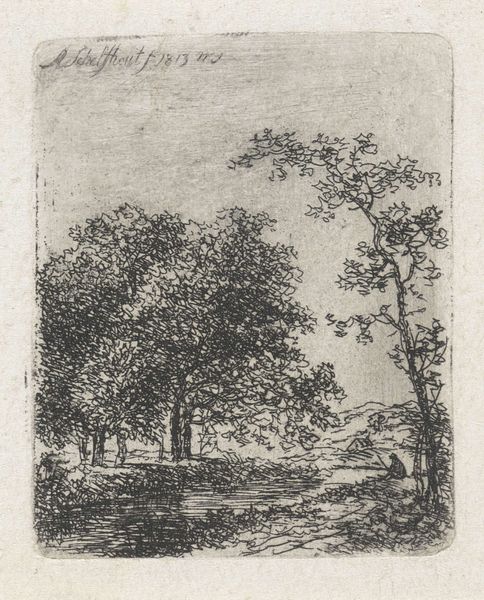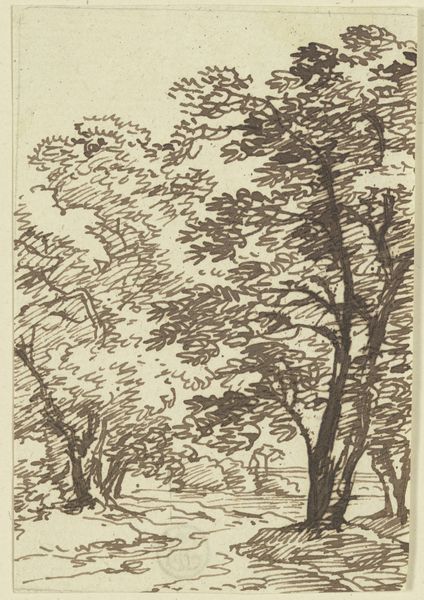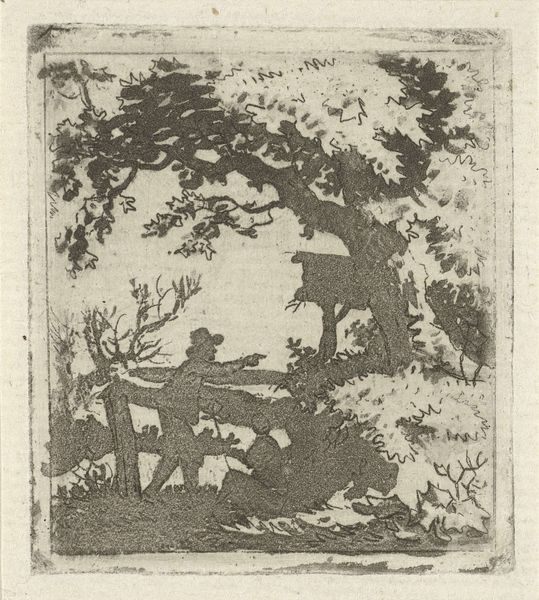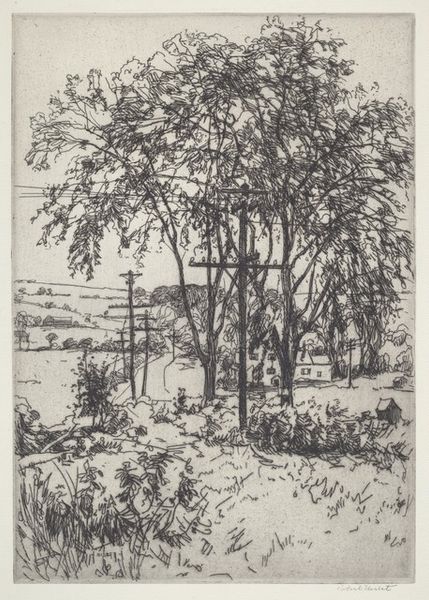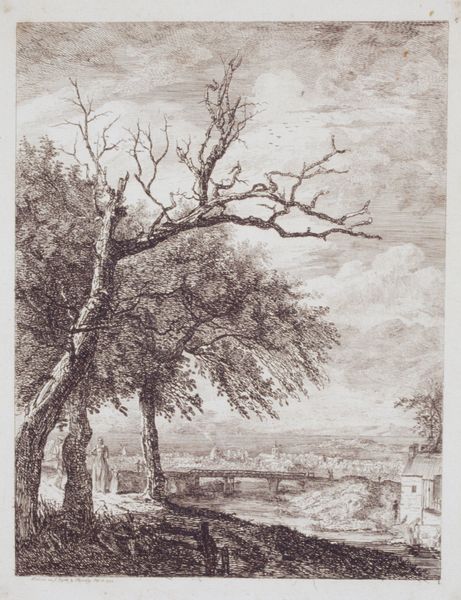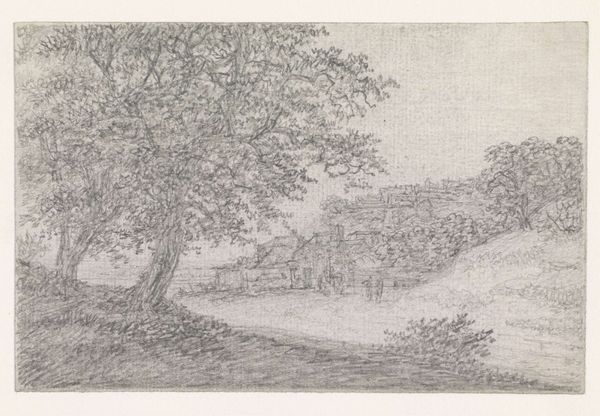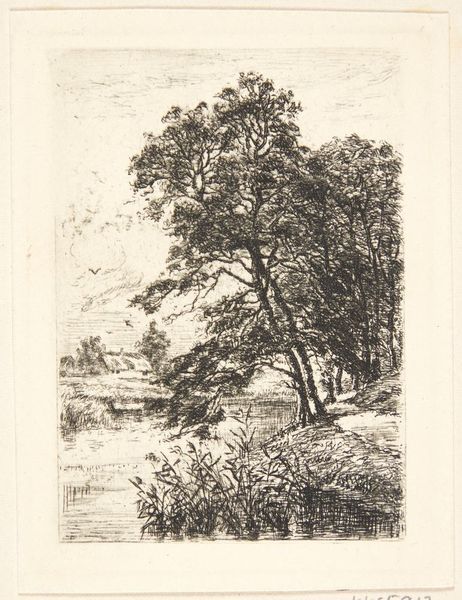
etching
#
etching
#
landscape
#
river
#
etching
#
forest
#
romanticism
Dimensions: height 58 mm, width 46 mm
Copyright: Rijks Museum: Open Domain
Editor: This is "Fisherman by a River in a Forest" an etching by Andreas Schelfhout, dating back to 1815. The lines are so delicate, creating almost a dream-like image. I'm drawn to the way the artist uses light and shadow. How do you interpret this work? Curator: Indeed. The charm of this etching resides significantly in its technical accomplishment. Note how the density of the etched lines varies, producing a sophisticated chiaroscuro effect. Consider, for instance, how the artist utilizes hatching and cross-hatching techniques to represent the textures of the foliage and the reflections on the water's surface. Do you observe the effect of depth created by the manipulation of line weight and density? Editor: Yes, now that you mention it, the trees in the foreground are much darker and have more detail compared to those further back. Curator: Precisely. Observe too the structural role of the composition. The artist deliberately positions the main subject - the fisherman – on the periphery rather than at the focal point. Why might Schelfhout make this choice? Editor: Perhaps to emphasize the overwhelming presence of nature and how small the human figure is within that grand landscape? Curator: An astute observation! The artist emphasizes line and form. It shows how careful attention to these elements constructs a reading that goes beyond a simple landscape. The piece uses formal artistic elements to present a discourse about nature. Editor: That's fascinating, seeing how the technical choices and composition work together to convey such a nuanced idea. I initially saw a simple, pretty scene but now I appreciate the sophistication in Schelfhout's artistic choices.
Comments
No comments
Be the first to comment and join the conversation on the ultimate creative platform.
